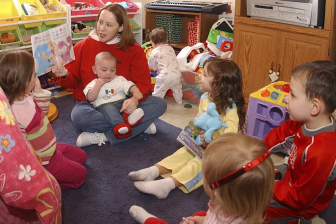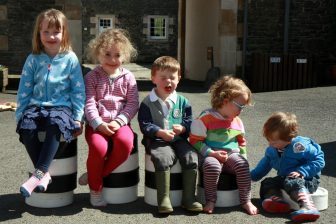
England’s northern youngsters ‘left behind’ by southern kids
A new report by England’s Children’s Commissioner Anne Longfield says that far too many young people growing up in the north face both deep-rooted deprivation and poor schools. While some children in the north are doing well, there are still ‘huge gaps’ between them and their southern counterparts.
Growing Up North, Look North: A generation of children await the powerhouse promise calls for greater investment for struggling families and improved teacher recruitment in northern regions. It follows a year’s research, analysis of and interactions with children, educational institutions, businesses, charities and health professionals.
While the report praises the ambitions of the UK government’s much-talked about Northern Powerhouse project, it also warns that many of the most disadvantaged children living in northern England are falling ‘far behind’ their peers in the south, particularly those in London.
Experiences
“They are less likely to do well in secondary school, more likely to go to a poor school and more likely to leave education early,” says the report, which includes views and experiences – good and bad – of children growing up in the north.
The “Northern Powerhouse’ is a concept originally proposed by the Conservative Government in 2014, with the intention of repositioning the British economy from London and the south east and instead focusing on its core northern cities – many of which have been undergoing economic transformations – like Leeds, Manchester, Newcastle and Liverpool.
Interestingly, while youngsters aged two to three years old in the north are likely than their London counterparts to attend day care, they are less likely reach the expected standard of development for starting mainstream school. High numbers of children in the north are also dropping out of school too early, missing vital parts of their education and undermining their future prospects.
Pride
What also stood out was the pride which young people felt for the cities they had been born and raised in, including Liverpool, Manchester and Newcastle. The general view was that they hoped that they would be able to live in the same city they were brought up in when they become an adult.
A ‘significant minority’ of those young people interviewed for the report also been directly exposed to crime, including violence, drugs and gangs, leading some to say they felt unsafe in the places that they lived. Others however concluded there were ‘good and bad aspects’ in any location, particularly certain housing estates, rather than an entire city or town being overrun with crime.
One of those interviewed for the report was Councillor Judith Blake, the leader of Leeds City Council. She said their aim was to be ‘the best city for children and young people to grow up in’, as part of the Child Friendly Leeds strategy.
Vision
“The child-friendly vision is one that the whole city can, and is, uniting behind – one that invites everyone, including individuals, schools, sports clubs, voluntary services, private sector companies, health, the police and the wider public sector to determine and develop their role in improving the lives of children and young people. It puts children at the very heart of the city’s growth strategy,” she said.



